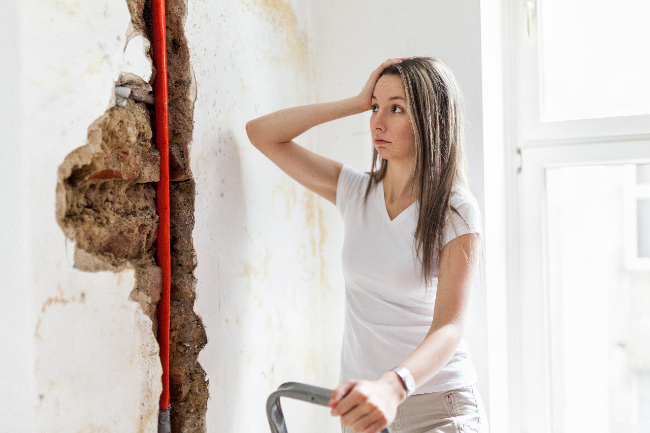Water is one of the most destructive elements of the structure and contents of your building. Plumbing issues like leaks or burst pipes, flooding, or leaking walls can cause various problems that can lead to water damage, including structural and furnishings damage, electrical hazards, tarnished paint, and much more.
Water damage can also lead to mould growth that can occur within 48 hours of the damage. Stagnant water is the perfect environment for the growth of microorganisms, viruses, and bacteria. This can lead to several health issues, including typhoid, cholera, upper respiratory tract syndrome, and even asthma.
What is Water Mitigation?
The issues mentioned above only grow with time. To keep it from getting worse, you must contact a specialist for water mitigation. It is a process by which the water and moisture levels in the building are reduced, preventing further loss of property and reversing the damage caused by the water. It includes a thorough cleaning, sanitization, disinfection, and restoration of the building to its pre-water conditions.
What’s the Process Like?
The process of water mitigation is never the same; it depends on many factors such as the extent of water damage, mould growth (if any), its root cause, and the condition and age of the building. However, generally, this is what the water mitigation process looks like.
1) Initial Assessment
The water mitigation process begins with a thorough assessment of the property and the damage caused by water. The specialist figures out what caused the issue in the first place, the extent of damage, and any mould growth. Once that is done, the specialist finalizes a plan of action and presents it to you with a quote.
2) Careful Demolition (If Necessary)
If the procedure is approved, the specialist’s team will start careful demolition, if needed. In most water damage cases, demolition is not required, but if the water damage is severe, demolition is required to clean and restore the interiors of the walls, ceilings, and floors.
3) Water Extraction
The team then installs dehumidifiers and fans to evaporate the water from the building. This is a crucial step before the cleanup begins, and can take some time. This step stops the water from causing further damage to the property.
4) Cleanup and Restoration
Once the water is extracted, the specialist team can finally begin the cleanup and restoration process. First, the building is dried using specialty equipment, disinfectants, and then brought to a dry standard.
Second, the final restoration is carried out. Here, the building is brought back to its pre-water-damage condition by professional technicians and plumbers. If the demolition was done to any components of the building, it is also reconstructed.
When’s It Needed?
You must contact a water mitigation specialist as soon as you notice water damage in your building. Some of the signs of water damage you should look out for are soaked rugs, upholstery, carpets, leaking walls, flaking or bubbly paint, warped flooring, pooling, or flooding in the basement, etc.
You must have a specialist carry out water mitigation before it causes further damage to your property. You can begin by contacting Nationwide Restorations, a fully accredited restoration service provider that can help you reverse the damage water has caused to your property.

